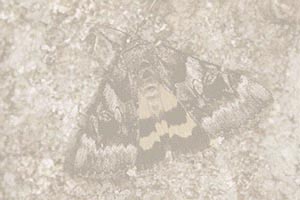|
Publications
Taxonomic Notes
Rearing:
Wild larvae
Eggs from females
iNat Wishlist:
ilia vs. umbrosa
Larvae on Rosaceae
mtDNA: praeclara
More About:
Maps & images
The authors
|
|
Rearing
We would like to
encourage everyone in the iNaturalist community to become proactively involved in caterpillar research that will be included
the publication of the MONA Catocala Fascicle! Mostly this does not involve any special requirements
or preparation, other than an abiding interest in underwing moths and their natural history. On this page
we list a few ways in which you can help contribute. In addition to photographing and rearing Catocala per se,
all documentation of behavior such as feeding/nectaring, mating, and oviposition is of great value.
Wild larvae.
This is easy to do and yields amazing results! Most of the Catocala larvae being recorded on
iNaturalist are mature or nearly mature caterpillars, and ready to pupate. These can be brought indoors and
successfully kept alive in any
sort of suitable container (we use Tupperware), and they probably will spin their characteristic
loose silken cocoon within a day or few. If a larva is found on the bark or branches or foliage of a tree or shrub,
the odds are nearly always in favor of that being its actual foodplant, and you can offer leaves that will be
accepted and eaten. Add some paper toweling as a lining for the container (this will also be an enticing substrate
for use in cocoon spinning). Do not water the toweling or container, and change out the foliage
after 1-2 days. Larvae found
wandering on the ground are usually "pre-pupal" and seeking a site to construct a cocoon,
and normally do not require further feeding. All Catocala species have one generation per year, and so
adults will hatch, with luck, within several weeks of pupation. Smaller underwing species spend 15-25 days
as pupae whereas larger species spend 25-35 days. Having a reared adult
is often the only method
for determining what species a larva belongs to (other than mtDNA), given the extreme variation and overlap in larval
morphologies among species. Take photos of the adult that hatches (include a view of the hindwings) and link it to your photo of the corresponding larva.
Voucher pinned specimens of Catocala adults reared from known larvae and known foodplants are highly desirable, but with good photos
in hand, releasing the adult back into the wild is certainly an option. Don't dismay if the larva happens to be
parasitized and produces a dipteran or hymenopteran, as this is also important data! (Parasitization
is not typically the fate of mature Catocala larvae, they normally succumb earlier in life).
Eggs from females.
Many species of Catocala will lay eggs in captivity. Rearing out broods from known female moths is an important
tool for documenting the scope of morphological variability among the resulting lavae and adults, and has proven to be decisive
for verifying the boundaries of many species. We use paper lunch bags for housing female moths, although slightly larger paper
bags may be helpful with larger species (or if you wish to also add foliage or a branch or piece of bark from a potential foodplant).
Only one moth per bag, always, to keep the data straight! Adult Catocala are avid feeders, and so you should supply a food source that
also provides liquid. Some underwing aficionados use a dilute mixture of honey or molasses and water placed into a plastic soda/seltzer bottle cap,
others use slices of fruit, and so forth. The food source should be checked and cleaned/refreshed daily or nearly so. Misting
the interior of the bag on a daily basis also prevents dessication of the moth as well as the food source. Female moths provisioned
in this manner will usually thrive in bags for days to weeks or even months (smaller species on the low end, larger species on the
high end). Egg laying may not occur immediately, but often commences within a few days.
Many species, notably those that feed as larvae on Juglandaceae and Rosaceae, typically secrete clusters of eggs in the seams of
the paper bags, whereas others will often lay across the inner surfaces of the bag. With some patience and practice you can usually
ascertain whether eggs have been laid by inspecting the seams from the outside, or by
carefully opening and peering into the bag without disturbing the moth. Either a good photo or a vouchered pinned specimen of the female
is essential for identification, but a female that has produced eggs can be returned to the environment if you
wish (although rest assured that nearly every female Catocala kept alive for eggs has already mated and
has previously deposited a decent proportion of her reproductive output outside).
|
|
